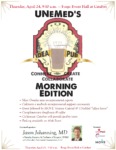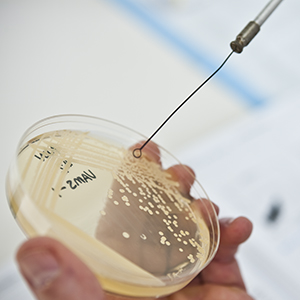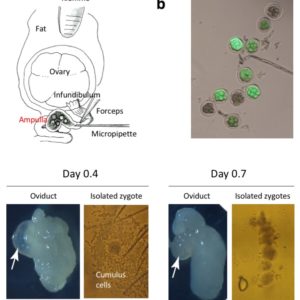by Rick Ruggles, Omaha World-Herald
OMAHA, Neb. (July 6, 2012)—A drug created at the University of Nebraska Medical Center has been deployed to fight malaria in India.
The drug, called Synriam, uses the findings of Jonathan Vennerstrom and Yuxiang Dong, scientists in UNMC’s College of Pharmacy.
It’s the first approved drug invented at UNMC in at least 10 years, said Michael Dixon, CEO of UNeMed Corp. UNeMed commercializes research for UNMC scientists.
UNeMed gave the compound’s rights to Medicines for Malaria Venture, an international group that battles malaria with the help of the Bill & Melinda Gates Foundation and other organizations. There is little profit in malaria medications in industrialized nations such as the United States, Dixon said, because malaria has been virtually defeated in them.
The countries where malaria continues to cause havoc, such as sub-Saharan African nations, can’t afford to pay much for the drugs.
The World Health Organization estimates that 216 million malaria cases occur worldwide each year, killing about 655,000 people. Most deaths occur in Africa, the WHO says.
Vennerstrom, a UNMC scientist since 1987, spent much of his childhood in Ethiopia, where his parents were missionaries. He saw people sickened by malaria, which is caused by a parasite carried by mosquitoes. Symptoms include fever, chills, body aches, lethargy and nausea.
As a scientist, Vennerstrom knew the chemical makeup of a natural Chinese product called artemisinin, which is used in some anti-malaria drugs. He said a considerable amount of the plant material must be harvested to produce a small quantity of anti-malarial medicine.
Vennerstrom also knew, from scientific literature, that a German laboratory had identified a new chemical reaction using ozone that might produce chemicals similar to the natural product. The German lab wasn’t working on a malaria drug, however.
Vennerstrom asked the head of the German lab whether he had a scientist who could come to Omaha to work with him on a malaria medication. Dong, a postdoctoral scientist, joined Vennerstrom in 1997.
“Timing is everything,” Dong said.
Dong, 49, grew up on a farm in China and had suffered malaria as a boy 44 years ago. “I remember my mom carried me to the small clinic,” Dong said.
He was shivering and lethargic. He suspects that clinicians gave him a medicine made with artemisinin.
Vennerstrom and Dong developed a synthetic compound with similarities to the natural Chinese anti-malarial substance.
It took about three years and many starts and stops.
“Drug discovery’s unpredictable,” Vennerstrom said. “You don’t design a drug like you design a house.”
They had hit upon a promising prototype by about 2000. Then they partnered with scientists in Switzerland, Australia and Great Britain for, among other steps, testing on animals and humans.
Vennerstrom said Medicines for Malaria Venture turned the compound over to Ranbaxy Laboratories, India’s top drugmaker, which launched the drug for adults in India this year.
MMV’s chief scientific officer, Tim Wells, said via email that the drug is “a major milestone.”
“We look forward to more data from patients in Africa and from studies with children, since this is where the vast majority of the disease is,” Wells said.
Synriam requires three doses to knock out malaria, and another compound discovered by Vennerstrom and Dong offers the potential for a single-dose cure. The same international team has worked to bring that drug to the finish line. It’s currently in human trials.
So far, the Omahans have celebrated with typical Midwestern modesty. “I guess we went out to the China Buffet one day,” Vennerstrom said.
Contact the writer:
402-444-1123, rick.ruggles@owh.com











